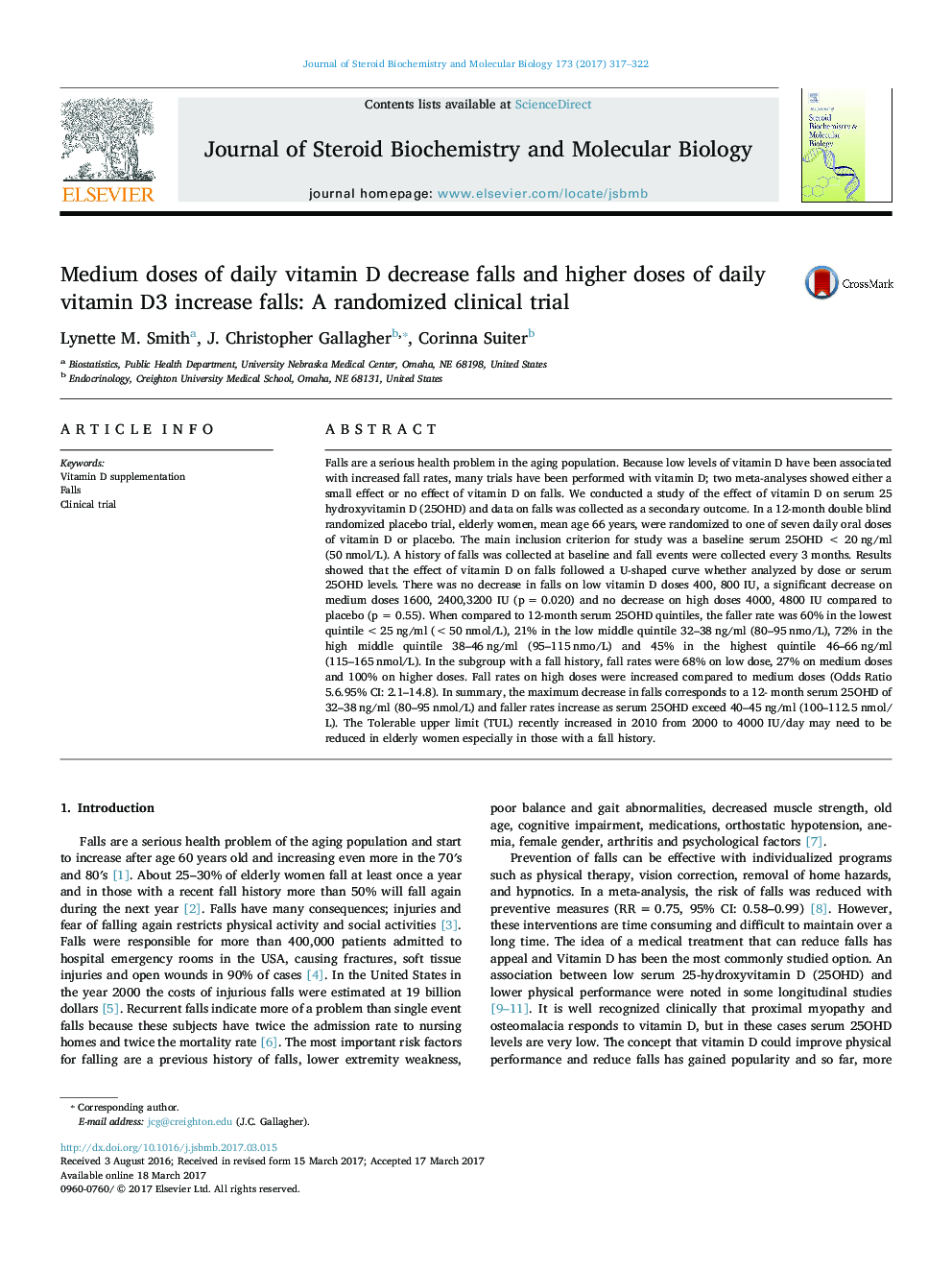| کد مقاله | کد نشریه | سال انتشار | مقاله انگلیسی | نسخه تمام متن |
|---|---|---|---|---|
| 5513025 | 1540974 | 2017 | 6 صفحه PDF | دانلود رایگان |

- One year double blind trial, 7 daily oral doses of vitamin D or placebo, on incidence Fallers.
- Faller rate was a U shaped curve, maximum decrease on doses 1600-3200 IU or serum 25OHD of 32-38Â ng/ml.
- High vitamin D dose 4000-4800 IU increases Faller incidence in those with previous Fall history.
Falls are a serious health problem in the aging population. Because low levels of vitamin D have been associated with increased fall rates, many trials have been performed with vitamin D; two meta-analyses showed either a small effect or no effect of vitamin D on falls. We conducted a study of the effect of vitamin D on serum 25 hydroxyvitamin D (25OHD) and data on falls was collected as a secondary outcome. In a 12-month double blind randomized placebo trial, elderly women, mean age 66 years, were randomized to one of seven daily oral doses of vitamin D or placebo. The main inclusion criterion for study was a baseline serum 25OHD < 20 ng/ml (50 nmol/L). A history of falls was collected at baseline and fall events were collected every 3 months. Results showed that the effect of vitamin D on falls followed a U-shaped curve whether analyzed by dose or serum 25OHD levels. There was no decrease in falls on low vitamin D doses 400, 800 IU, a significant decrease on medium doses 1600, 2400,3200 IU (p = 0.020) and no decrease on high doses 4000, 4800 IU compared to placebo (p = 0.55). When compared to 12-month serum 25OHD quintiles, the faller rate was 60% in the lowest quintile <25 ng/ml (<50 nmol/L), 21% in the low middle quintile 32-38 ng/ml (80-95 nmo/L), 72% in the high middle quintile 38-46 ng/ml (95-115 nmo/L) and 45% in the highest quintile 46-66 ng/ml (115-165 nmol/L). In the subgroup with a fall history, fall rates were 68% on low dose, 27% on medium doses and 100% on higher doses. Fall rates on high doses were increased compared to medium doses (Odds Ratio 5.6.95% CI: 2.1-14.8). In summary, the maximum decrease in falls corresponds to a 12- month serum 25OHD of 32-38 ng/ml (80-95 nmol/L) and faller rates increase as serum 25OHD exceed 40-45 ng/ml (100-112.5 nmol/L). The Tolerable upper limit (TUL) recently increased in 2010 from 2000 to 4000 IU/day may need to be reduced in elderly women especially in those with a fall history.
Journal: The Journal of Steroid Biochemistry and Molecular Biology - Volume 173, October 2017, Pages 317-322